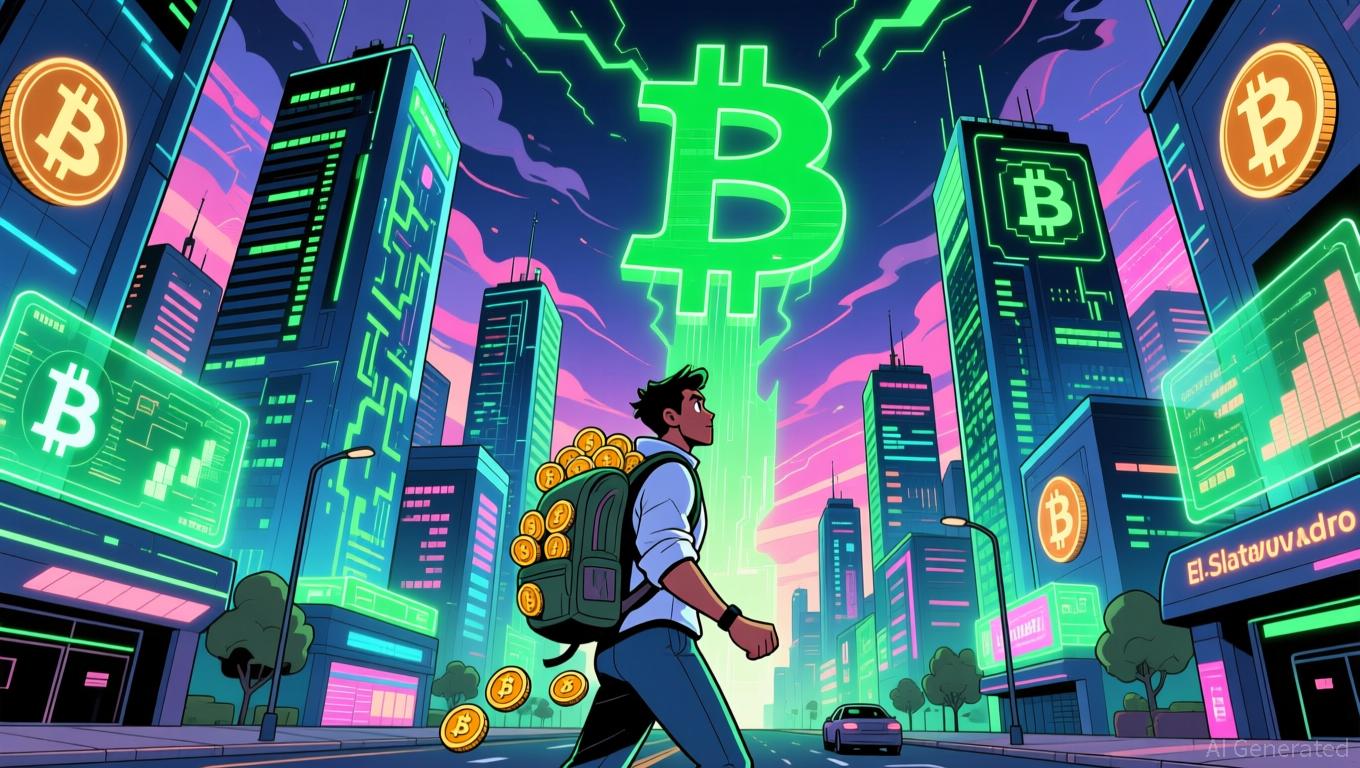The DASH-USDC Stablecoin Peg Turmoil: An Urgent Alert for Stablecoin Holders
- The 2025 DASH-USDC depegging exposed systemic risks in stablecoins, mirroring 2023’s USDC-SVB crisis and algorithmic failures. - DeFi platforms like Aave face cascading liquidations during collateral drops, highlighting vulnerabilities in leverage-driven models. - The Genius Act aims to regulate stablecoins but overlooks DeFi risks, leaving arbitrageurs to navigate fragmented compliance frameworks. - Investors are urged to prioritize transparent collateral-backed stablecoins and avoid over-leveraged DeFi
Systemic Risks: A Fragile Ecosystem
Despite being promoted as "risk-free," stablecoins have shown they can fall victim to chain reactions of failures. In 2025, algorithmic stablecoins such as
These systemic dangers are not limited to algorithmic coins.
Arbitrage Opportunities: Navigating Regulatory Shifts
The UK’s move to introduce stablecoin regulations in 2025 demonstrates the close link between policy changes and market reactions.
Yet, arbitrage carries its own dangers. Without conventional protections—such as deposit insurance or a central backstop—on DeFi platforms like
Regulatory Responses: A Path Forward?
The DASH-USDC incident prompted lawmakers to act, resulting in the Genius Act—a statute aimed at clarifying the rules for stablecoins.
Conclusion: A Call for Caution and Innovation
The DASH-USDC peg loss is a stark reminder for investors. Although stablecoins are still central to crypto’s functionality, their systemic weaknesses require thorough scrutiny. Investors should favor stablecoins with clear, transparent backing and avoid highly leveraged DeFi environments. At the same time, the crisis highlights the necessity for new risk management solutions, such as adaptive collateral systems or hybrid stablecoins that combine fiat and algorithmic features.
As both regulators and market players respond to these challenges, one thing is certain: the notion of stablecoins as "risk-free" assets is now outdated.
Disclaimer: The content of this article solely reflects the author's opinion and does not represent the platform in any capacity. This article is not intended to serve as a reference for making investment decisions.
You may also like
Crypto’s Surge in Leverage Encounters Risk Management with Introduction of New Futures
- Cboe Futures Exchange launches Bitcoin and Ether Continuous Futures on Dec 15 to hedge crypto volatility. - Cash-settled contracts with cross-margining aim to mitigate risks from leveraged trades amid recent $168M liquidation events. - CFTC-aligned margin requirements and educational sessions highlight growing institutional interest in structured crypto derivatives. - Kraken’s $20B IPO and Trump’s Genius Act signal maturing markets and U.S. regulatory influence on global crypto governance. - Record lever

Bitcoin News Update: El Salvador Bets on Bitcoin as a Sovereignty Safeguard, Challenging IMF Conditions
- El Salvador's government defied IMF loan terms by purchasing $100M in Bitcoin , adding 1,090 BTC to its strategic reserves during a price slump. - Total holdings now reach 7,474 BTC ($676M), acquired through a "buy the dip" strategy despite IMF warnings about financial stability risks. - The IMF has not condemned the purchases but emphasizes compliance, while critics warn of fiscal instability and lack of public education on Bitcoin. - Bukele's administration defends Bitcoin as a hedge against inflation

AI’s $219 Billion Energy Sector Boom Fueled by Automation That Reduces Workforce
- AI-driven automation in energy management is displacing workers as the $219.3B market grows via predictive analytics and smart grid integration. - SoundHound AI accelerates agentic AI expansion with $269M cash reserves while C3.ai faces $116.8M losses and leadership instability. - Regulators struggle to balance AI's efficiency gains with labor displacement risks as blockchain and compliance tools adopt AI solutions. - The PwC developer's layoff exemplifies how AI's cost-cutting potential outpaces its abi

Trust Wallet Token (TWT) Price Trends in November 2025: Institutional Adoption and DeFi Collaboration Redefine Value Potential
- TWT's 2025 governance upgrades enhance institutional appeal through transparent DAO mechanisms and policy flexibility. - Trust Premium program incentivizes TWT usage via tiered rewards, creating flywheel effects for token demand and retention. - Institutional credibility and DeFi integration strengthen TWT's value proposition, stabilizing price dynamics amid market consolidation. - Recurring utility in gas discounts and tier upgrades establishes baseline demand, buffering against broader crypto volatilit